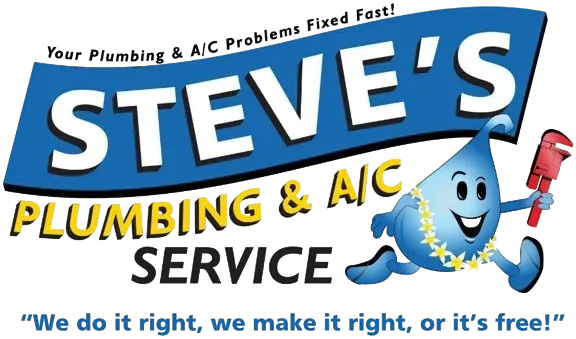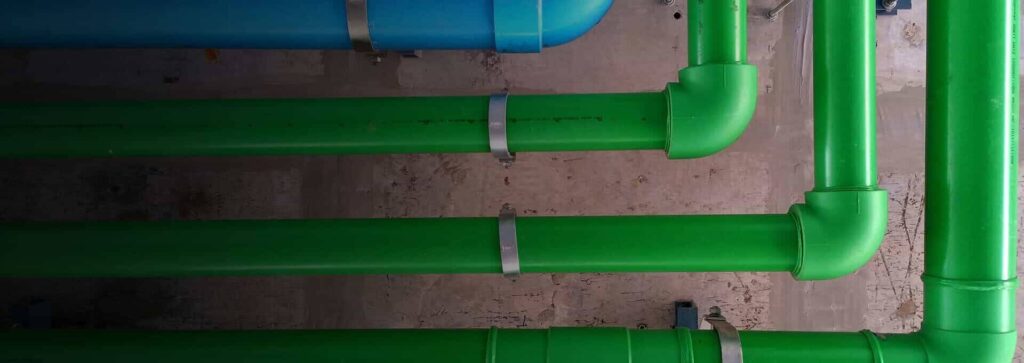Have you ever experienced finishing up a nice hot shower, feeling fresh and relaxed, only to be greeted by a dripping wet ceiling? It’s a sure way to ruin your vibe, right? But that soggy surprise is more than just an annoyance – it’s a potential nightmare waiting to happen.
You see, our island’s warm, humid climate is the perfect recipe for moisture problems to spiral out of control fast. A little leak here, some mildew there, and before you know it, you’re living in a scene straight out of a horror movie’s haunted house. Yeesh!
So it’s best to act quickly when you spot those telltale drips or stains on your bathroom ceiling. You shouldn’t write it off as no biggie – that’s how expensive headaches like rotting drywall, mold infestations, and even structural damage can sneak up on you. Trust us, getting that leak squared away ASAP is way cheaper than remodeling your entire bathroom (or paying astronomical mold remediation bills!).
So if your shower is raining down more than just water, it’s time to get proactive and call in the leak detectives. Ignoring ceiling drips is basically giving moisture a free pass to wreak havoc on your humble Honolulu abode. And nobody wants that!
Common Causes of Ceiling Leaks after a Shower
Okay, let’s dive into some of the most common culprits behind those pesky ceiling leaks after a shower. Remember, ignoring a little drip is just asking for a world of headaches down the road – especially in Honolulu’s perpetually humid climate!
Damaged or Missing Caulking Around the Shower
That caulk lining your shower or tub? It’s like a moisture force field, keeping all that water contained where it belongs. But when it starts cracking, peeling, or goes completely AWOL, suddenly your shower is an open portal for water to escape into the walls and ceiling below.
And in Honolulu’s muggy air, any moisture trapped in there is an open invitation for mold and mildew to throw a gnarly party.
Leaky Shower Drain or Plumbing Connections
Sometimes the leak has nothing to do with the shower itself, but those pipes carrying the water away. A loose drain connection or pinhole in the plumbing means water can start trickling down to soak the ceiling underneath.
Honolulu homes really take a beating from the island moisture too, so plumbing issues can fester unnoticed until that telltale ceiling stain finally appears.
Faulty Grout or Tiles in the Shower
Grout is like the glue holding your shower walls together. But it doesn’t take much for it to start cracking and crumbling, especially with Honolulu’s tropical climate constantly working to degrade it. Next thing you know, water is sneaking through those gaps and cracks, creating the perfect pathway to soak the ceiling below. Loose or missing tiles are an open invitation too!
Condensation Buildup
Even if your shower itself is watertight, all that steam has to go somewhere. If your bathroom is lacking proper ventilation, get ready for condensation galore. That excess moisture has to escape somehow, and often it winds up soaking into the walls and ceiling over time. Honolulu’s ridiculous humidity levels only make the condensation situation way worse too.
Leaking Pipes in the Ceiling
But what if the leak isn’t coming from the shower at all? Sometimes the true culprit is the plumbing pipes actually running through the ceiling itself that have sprung a leak. Hawaii’s salty ocean air can really do a number on metal pipes, causing them to corrode until cracks or pinholes develop. Then it’s shower time for your ceiling!
How to Identify the Source of the Leak
Before you can fix that ceiling leak, you first have to find the true source of the moisture.
Visual Inspection
Start by giving the area around your shower an intense visual pat down. Closely inspect every nook and cranny for any cracks in the tiles, gaps in the grout, or peeling caulk lines. Those are all potential weak spots for water to sneak through. And in Honolulu’s perpetually damp climate, any tiny opening is an open invitation for moisture to come flooding in and start that ceiling soak.
Water Test
If your shower area seems intact, it’s time for a good old fashioned water test. Simply run that shower for an extended period and keep a vigilant eye on the ceiling for any new drips or damp spots forming. If you see water starting to seep through in real-time, you know the leak is directly shower-related and can narrow your search. Just don’t wait too long to call for backup – those tropical deluges can turn a tiny drip into a raging rapid in no time!
Inspect the Ceiling
Of course, sometimes the signs of a leak are staring you right in the face from above. Do a thorough examination of the ceiling itself, looking for any discoloration, bubbling paint, or sections that seem swollen and soft. Those are all red flags that water damage has already set in.
Remember – what might start as a small, easy-to-fix leak can rapidly become a full-blown ceiling collapse if you don’t stay on top of it. Doing a little leak detecting legwork early on is the key to avoiding a total soggy disaster!
Steps to Fix the Leak
Once you’ve tracked down the leak’s source, it’s time to spring into action and get that moisture under control before it wreaks any more havoc.
Here are some steps to help put a stop to that ceiling drip for good:
Re-Caulk the Shower
If your investigation revealed gaps or cracks in the shower’s caulking, re-sealing that moisture barrier should be job one. Start by removing any old, crumbly caulk and giving the area a good scrub. Then break out the big guns – a fresh tube of waterproof, mold-resistant caulk to seal up every nook and cranny.
In Honolulu’s sauna-like climate, that caulk takes a beating from humidity, so re-applying it regularly is wise.
Fix or Replace the Shower Drain
But what if the leak seems to be coming from that shower drain itself? You may need to tighten up any loose connections or replace faulty components like the drain cover or gaskets.
While a simple drain swap might be a DIY job elsewhere, Honolulu’s complex plumbing systems could require calling in professional reinforcements to ensure it’s done right.
Repair Grout or Tiles
If your grout inspection revealed lots of crumbling or missing tiles, those need to be repaired ASAP to stop water from seeping through the walls. Carefully remove any damaged grout or tiles, and re-grout and re-tile those areas for a watertight seal.
With Honolulu’s tropical humidity, this may become an annoyingly regular maintenance task as grout degrades faster.
Improve Bathroom Ventilation
But sometimes the leak has nothing to do with the shower itself – it’s a condensation issue from lack of airflow. Installing an exhaust fan or making sure to open those windows during showers gives all that steam an escape route instead of settling into the walls and ceiling.
Proper ventilation is extra crucial in Honolulu’s already swampy climate.
Whether it’s re-caulking, re-grouting, drain repairs or air flow fixes, getting ahead of those moisture issues is key before a little ceiling drip turns into a full-on waterfall disaster. With Honolulu’s humid weather working against you, staying on top of leak prevention is the only way to keep your home nice and dry!
When to Call a Professional
DIY challenges are great, but some ceiling leaks are just too stubborn for the amateur homeowner to tackle solo. If you’ve done what you can but that drip keeps on dripping, it’s probably time to call in the professional leak busters.
Persistent Leaks Despite Repairs
You followed all the steps – sealed up every crack, replaced faulty pipes, maybe even did a little bathroom rain dance for good measure. But that water keeps finding a way through like a determined drizzle.
When basic repairs just won’t cut it, it’s a sign you’ve got a crafty leak situation that needs a plumber’s skilled eye and tools to properly diagnose and fix.
Plumbing Issues or Extensive Water Damage
But maybe the leak isn’t even shower-related at all, but a larger plumbing system problem lurking in your walls or ceiling. Or perhaps your delayed reaction has allowed that little drip to turn into a full-on liquid invasion, with water damage spreading far beyond the bathroom.
In those cases, you’ll definitely want to enlist professional backup before things get even more out of hand.
Advantages of Professional Help
What’s great with local plumbers is that they have seen it all when it comes to our island’s unique leak woes. They know how our tropical heat and humidity can turn a small moisture issue into a mold-infested nightmare at record speeds.
Not only can they locate and eliminate the sneakiest leaks, but they’ll also share tips to prevent future drips and keep your plumbing systems running smoothly in spite of our extreme climate.
So sure, give those DIY leak repairs your best shot. But if water keeps defying your efforts or you suspect larger plumbing gremlins at play, don’t be a hero. Save yourself the headache and soggy drywall by calling in professional leak-stopping reinforcements before that ceiling drip becomes a total flood.
The Drip Stops Here: Why You Need Steve’s Plumbing for Your Ceiling
At the end of the day, a ceiling leak is more than just an annoyance – it’s a potential home disaster just waiting to happen. While DIY fixes are admirable, sometimes you just need to wave the white towel and call in our leak extermination experts.
Don’t let moisture get the best of your humble abode! Dial (808) 563-4054 and let the certified pros at Steve’s Plumbing and AC Service get that water flowing properly again before any more damage is done. Because when it comes to leaks, you deserve the very best drip-demolishing service around.


